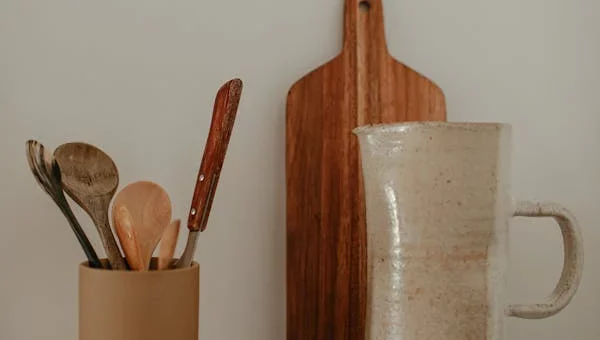
Introduction
When it comes to creating delicious meals, the right cookware can make all the difference. Whether you’re a beginner cook or a seasoned chef, investing in quality cookware sets is essential for efficiency, durability, and ultimately, better food. This comprehensive guide will walk you through everything you need to know about must-have cookware sets for every kitchen, from materials and types to maintenance and buying tips.
1. Why You Need a Cookware Set: Benefits and Essentials
The Importance of Cookware Sets
Having a cookware set in your kitchen means you’re equipped to handle a variety of cooking tasks without constantly buying individual pots and pans. A well-rounded set covers essential cookware types, ensuring you can sauté, boil, fry, and simmer with ease.
Cookware sets also save space and often provide better value than purchasing pieces separately. Beyond cost-effectiveness, they offer design harmony—matching aesthetics and complementary features.
Key Benefits of Owning a Cookware Set
-
Versatility: A good set includes various sizes and types of pots and pans suited for different cooking methods.
-
Consistency: Uniform materials and handles improve cooking performance and ease of use.
-
Cost Efficiency: Bundled sets are typically more affordable than purchasing each item individually.
-
Storage: Matching lids and stackable designs help organize kitchen space better.
2. Types of Cookware Sets You Must Have
Stainless Steel Cookware Sets
Stainless steel is a favorite due to its durability and non-reactive surface. It doesn’t alter the flavor of your food and resists rust and corrosion. High-quality stainless steel sets often feature an aluminum or copper core for better heat conduction.
-
Pros: Long-lasting, dishwasher safe, resistant to scratches.
-
Cons: Can have uneven heating if not layered properly.
-
Ideal for: Searing, browning, and preparing acidic dishes.
Non-Stick Cookware Sets
Non-stick cookware is excellent for low-fat cooking and easy cleanup. These sets are perfect for cooking eggs, pancakes, and delicate fish.
-
Pros: Requires less oil, easy to clean, lightweight.
-
Cons: Can scratch easily, usually less durable than stainless steel.
-
Ideal for: Beginners or those wanting low-oil cooking options.
Cast Iron Cookware Sets
Cast iron cookware is known for superior heat retention and versatility, working well on stovetops, ovens, and even campfires. Modern enameled cast iron is easier to maintain and prevents rust.
-
Pros: Excellent heat retention, naturally non-stick when seasoned, extremely durable.
-
Cons: Heavy, requires maintenance to avoid rust.
-
Ideal for: Slow cooking, frying, baking, and grilling.
Copper Cookware Sets
Copper cookware offers excellent heat conductivity, allowing precise temperature control, favored by professional chefs.
-
Pros: Superior heat control, attractive appearance.
-
Cons: Requires polishing, reacts with acidic foods, often expensive.
-
Ideal for: Sauces and delicate cooking requiring temperature control.
3. Essential Pieces in a Cookware Set
Frying Pan (Skillet)
A frying pan is versatile for sautéing, frying, and searing. Choosing between stainless steel or non-stick depends on your cooking style.
Saucepan
A saucepan with a lid is crucial for boiling, simmering, and making sauces. Sizes range typically from 1 to 3 quarts.
Stockpot
Large and deep, a stockpot is essential for soups, stews, and boiling pasta. A 6 to 8-quart size is most common.
Sauté Pan
Deeper than a skillet, a sauté pan offers high sides and a lid, perfect for frying with liquids and reducing sauces.
Specialty Pieces
-
Grill pans: For indoor grilling.
-
Woks: Ideal for stir-frying.
-
Double boiler: For delicate melting tasks.
| Cookware Piece | Typical Use | Ideal Material |
|---|---|---|
| Frying Pan | Sautéing, frying | Stainless steel, Non-stick |
| Saucepan | Boiling, simmering sauces | Stainless steel |
| Stockpot | Soups, pasta | Stainless steel, Cast iron |
| Sauté Pan | Frying with liquids | Stainless steel |
| Grill Pan | Grilling indoors | Cast iron |
| Wok | Stir-frying | Carbon steel |
4. Choosing the Right Cookware Set: Factors to Consider
Material and Heat Conductivity
Materials affect how evenly your cookware heats. Copper and aluminum conduct heat faster, while stainless steel provides durability. Consider your stovetop type (gas, electric, induction) when selecting materials.
Size and Number of Pieces
Think about the number of people you cook for and your kitchen storage capacity. Larger families or frequent entertainers may need bigger or more pieces.
Compatibility with Cooktops
Not all cookware works with every stovetop. For induction cooktops, cookware must be magnetic (stainless steel or cast iron).
Maintenance and Cleaning
Some cookware requires more care, such as seasoning cast iron or hand washing non-stick pans. If you prefer dishwasher-safe options, stainless steel is often best.
Budget
Cookware sets range widely in price. Investing in quality pieces pays off in longevity, but it’s possible to find budget-friendly sets that perform well.
5. Caring for Your Cookware Sets: Tips and Tricks
Proper Cleaning Techniques
-
Use gentle sponges for non-stick surfaces.
-
Avoid soaking cast iron; dry immediately and apply oil.
-
Stainless steel can handle scrubbing but avoid harsh abrasives.
Storage Tips
-
Stack pots with protective layers to prevent scratches.
-
Store lids separately or inverted on pots.
-
Use hanging racks for frequently used pans.
Seasonal Maintenance
-
Re-season cast iron cookware yearly.
-
Polish copper cookware to maintain its shine.
-
Check non-stick pans for surface wear and replace as needed.
Conclusion: Elevate Your Cooking with the Right Cookware Set
Choosing the right cookware set is an investment in your cooking journey. With the right materials, essential pieces, and proper care, your cookware will serve you for years, making meal prep easier and more enjoyable. What cookware do you swear by in your kitchen? Share your favorite pieces or ask questions below — let’s get cooking!